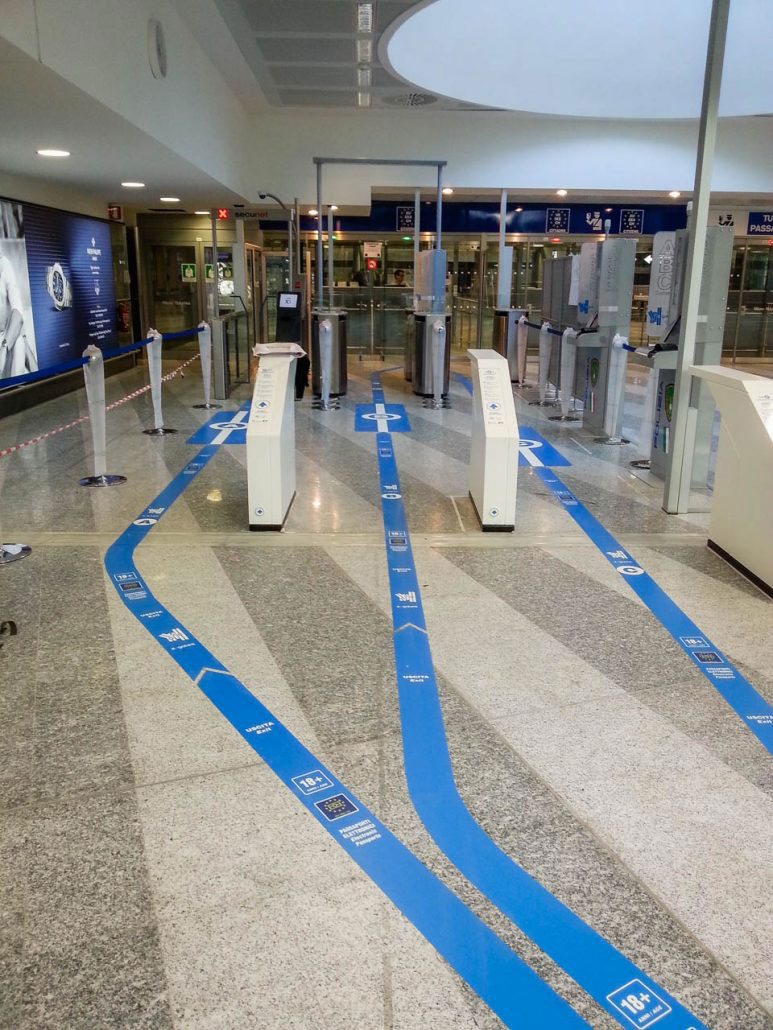Finding your way in an unknown building or environment can be tricky, especially if you’re there for the first time. Fortunately, finding your way can be streamlined through various tools, among which the discipline known as wayfinding is the most important one. In this post, we will show you (with examples) what wayfinding is all about.
Imagine a typical situation – you enter a large building or go to the business area. You’re looking for a specific company – located in a specific building on a particular floor. How do you get there? You can use guidelines on the company’s website (provided they offer such a convenience), download or use a map on your smartphone, or use signage that’s most likely available in the area. This signage, helping you find your way to the desired place, plays a major role in wayfinding.
What is wayfinding?
In general, it’s a discipline or a process people use to locate themselves in a given physical space and navigate to a desired location. For us, as branding professionals, wayfinding is an essential element of branding, especially for companies operating at least partly from the office. Typically, we can divide the process of finding a way into four major stages:
- Orientation (you try to determine your location)
- Route decision (you analyse different options for getting to your destination)
- Route monitoring (you’re on your way, and you use different orientation points to ensure you are still heading towards the destination)
- Destination recognition (the destination is in your sight)
Going further, wayfinding comprises three basic tools:
- Signage located in different places of a given building/area
- Mobile apps
- Interactive kiosks
Let’s have a closer look at each tool.
SIGNAGE
The first kind of wayfinding tool is based on physical signage located in different places, e.g., near the entrance, on every floor, in or near elevators, etc. You can place signage on the ground, on a wall or as a standalone totem. Moreover, such signage can be backlit to offer support 24/7.
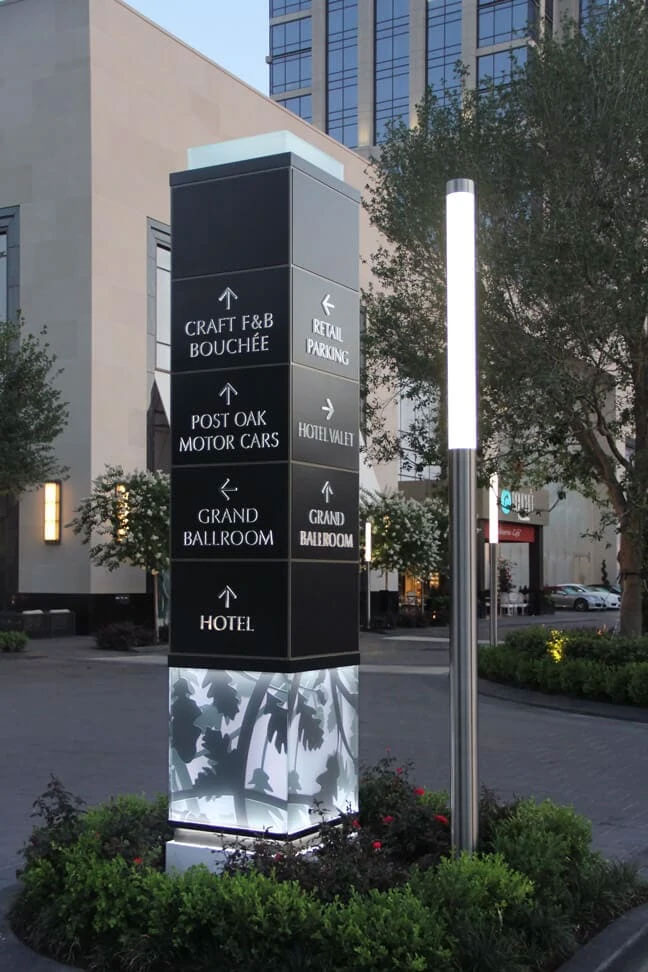
MOBILE APPS
Finding your way at a large airport can be tricky. That’s why, in 2017, two London airports, Heathrow and Gatwick, started offering the world’s first wayfinding app based on augmented reality (AR). This app uses beacons located in different places within the airport, helping locate each user and direct them to a desired destination (e.g., a gate or a check-in counter).
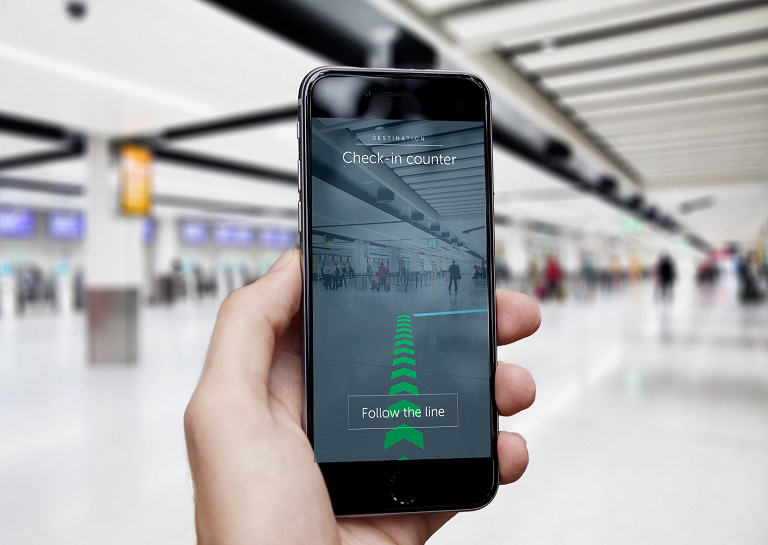
INTERACTIVE KIOSKS
They are a common sight in every shopping mall, but also in other locations. Interactive kiosks help visitors, passengers and customers:
- Determine their current position
- Discover the list of available stores/services/companies/amenities
- Find the way to a desired location
- Use other features (e.g., purchase a ticket)
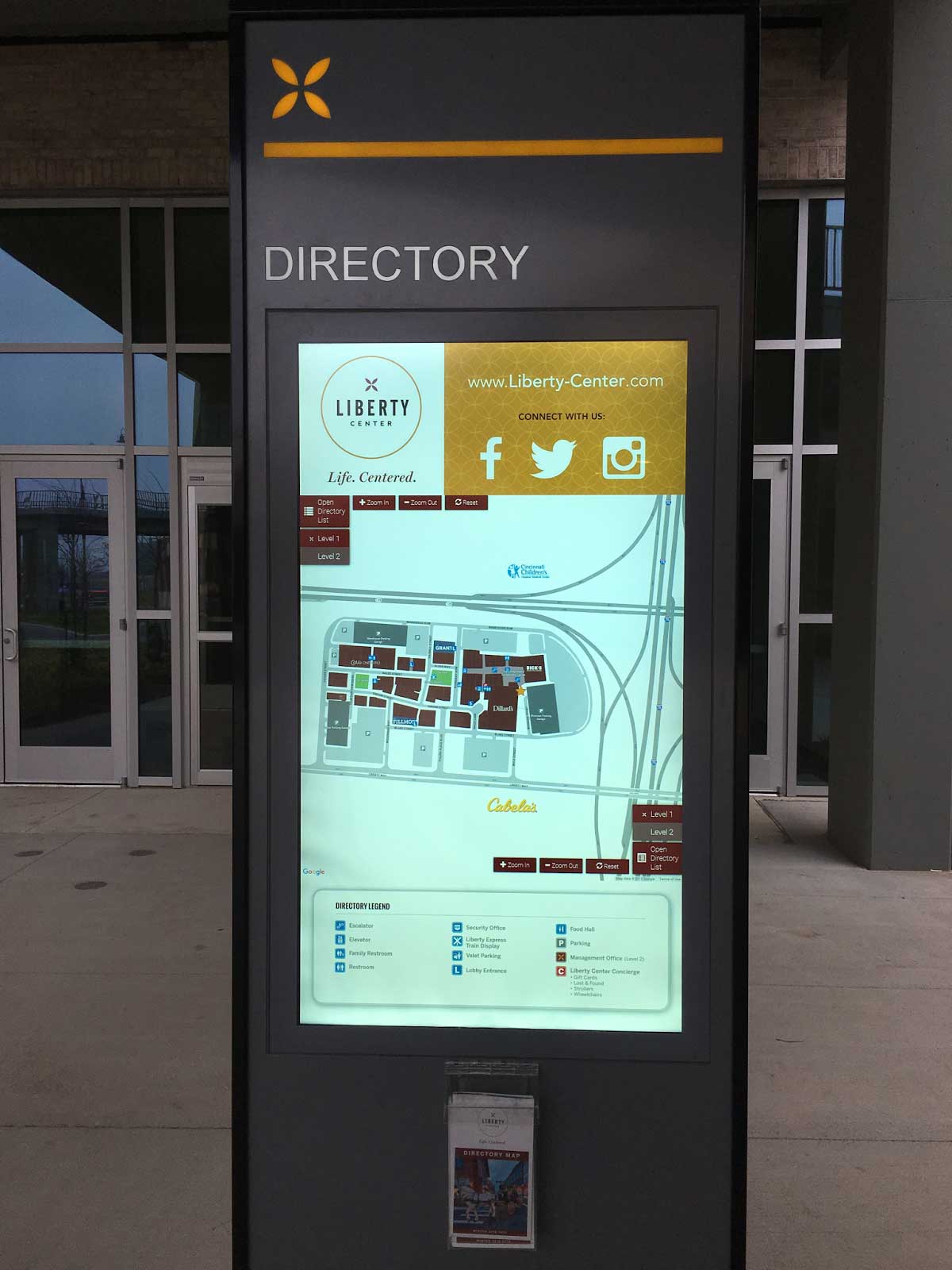
For instance, Liberty Center in Cincinnati uses this kind of direction for everyone who visits the place. Moreover, you can easily integrate their system (delivered in cooperation with Google) with mobile devices (without downloading any software). Liberty Center’s kiosks detect a given visitor’s location and give them interactive walking directions in real-time. In other words, this system works like an indoor GPS.
THREE TYPES OF SIGNS
Generally speaking, we can distinguish three basic types of signs used for wayfinding purposes:


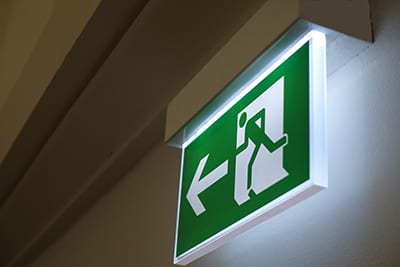
WHERE IS WAYFINDING USED?
In a sentence? Basically, wherever it’s easy to get lost. Typical applications of wayfinding tools comprise the following locations:
- Business districts
- Office buildings
- Large apartment buildings
- Airports
- Train and bus stations
- Hotels
- Shopping malls
- Amusement parks
- Hospitals and clinics
- Car parks
- Sports stadiums
Wayfinding principles
A wayfinding system has to be, above all, useful and intuitive. Sticking to the principles we outline in this article will help you ensure the majority of your visitors/customers have no problem finding their way or getting to their destination.
DON’T LOSE YOUR BRANDING
You need to remember that wayfinding is an integral element of branding, which in turn, is a comprehensive process of building image and brand awareness. That said, good wayfinding is based on an existing brand or creates a separate building’s brand. It touches on the facility’s history, place, city, and purposes and uses these elements to create something new and creative.
That’s exactly what we did with our wayfinding signage system for ABB. Read more about this project.

START WITH RESEARCH
Before you start designing any part of your wayfinding system, you need to analyse the premises. Where is the wayfinding information needed? What kind of wayfinding system will work best in your case? Do you have to include some special needs of people visiting your building (e.g., visually impaired or disabled)?

MAKE SURE YOUR DIRECTIONS ARE EASY TO LOCATE AND UNDERSTAND
Firstly, always use a straightforward design for your signs so that many people can easily understand them. Secondly, don’t include too much information; stick to short messages and names. Thirdly, use a sans-serif typeface, which is usually more legible. Moreover, use wide letter proportions and clear spaces to ensure good readability. Bilingual signage is also a good idea if you know people are speaking different languages in your building. Here is a good example of a Canadian airport with signage in two languages – English and French:
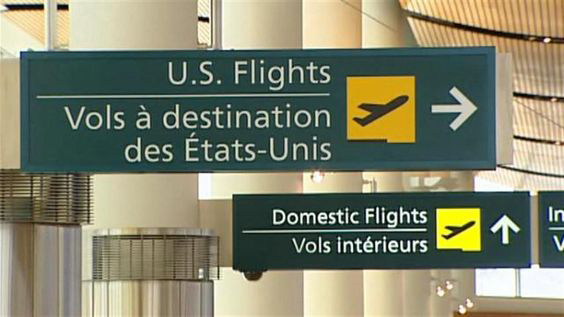
As you can see, the sign also includes a commonly-understood icon of a plane taking off. These icons play a crucial role in every international environment.
However, location is also important. In general, signage should be located in sight so that it can be quickly located. In addition, you can also consider using non-standard locations such as the ground/floor. Here is a good example of such signage used at Milano Malpensa airport:
Such signs can be very useful if you want your visitors to follow a specific path to their destination, for instance.
PICK THE RIGHT COLOURS
Colours play a big role in all safety signs:
- Mandatory signs are usually blue
- Prohibition and fire safety signs are red
- Warning signs are yellow
- First aid and emergency exit signs are green.
When it comes to wayfinding, you have more flexibility. However, it is important to use colours that enable a clear and quick understanding of what you want to show or convey. Ensure the contrast is sufficient and that the used colours are not aggressive (trying to read signage made in aggressive, vibrant colours is tiresome).
Additionally, it’s better to use calm, earthly colours in places like clinics, hospitals, SPAs, etc. where you usually want people to be calm and in a good mood.
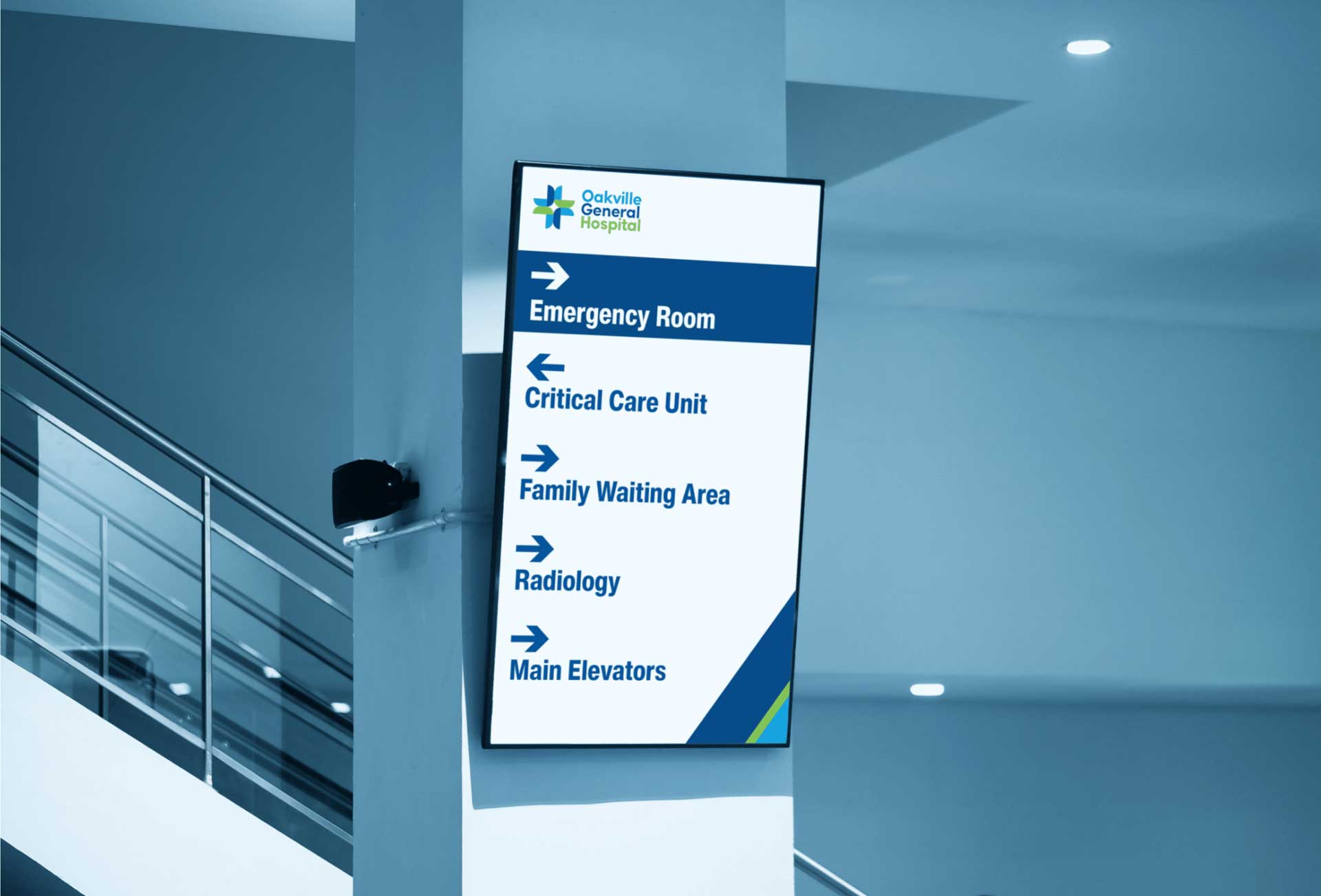
BE CONSISTENT
Every element of your wayfinding system should be designed in the same way. The human brain looks for patterns everywhere. Using different signs, colours or fonts will only confuse your visitors.
THE GESTALT THEORY
Gestalt psychology focuses on how the human mind organises and interprets visual data. We can distinguish six crucial Gestalt principles that are used in wayfinding and design in general:
- Similarity: We discussed this principle in the previous heading. All signage elements should be visually grouped (i.e., they have to be of the same design).
- Continuation: A human brain is always looking for the simplest path. Therefore, your signage should always offer the shortest, most straightforward way to the destination.
- Closure: Again, a human brain tries to fill in the missing parts of a design. While this can be used to play with viewers, make sure your signage has a clear starting and ending point and the whole sign is visible.
- Proximity: If you want to group several elements together (e.g., amenities available on a given floor), make sure they are grouped and separated from the rest. Don’t put everything together, as this will cause more confusion.
- Figure/ground: The hard and fast rule is that the human brain interprets all the image’s large areas as the (back)ground and the smaller ones as the figure. Use this principle to ensure your signage can be easily distinguished from the background.
- Symmetry and order (also referred to as prägnanz): That’s what our brains look for when analysing images. For example, when you take a look at the mail/envelope icon, you immediately see “what you’re supposed to” – an envelope, not four overlapping triangles. That’s why you should use signs and icons that are already in use and not “invent” new ones just to stand out from the competition. When it comes to wayfinding, being overly creative is NOT the way.
Benefits of wayfinding
There are several benefits of a well-designed wayfinding system:
- Good CX: No one wants to feel lost or disoriented. With a clear, easy-to-read signage system, your visitors/customers feel safe in your building/area, and they don’t have to ask people for instructions (no one really likes to do that!). This significantly contributes to their overall experience.
- Time savings: Trying to find the desired location can take a lot of time. With a good signage system, no one wastes time figuring out where they are.
- Marketing purposes: Signs directing to specific companies/points can help those entities get more visitors/customers. Imagine a typical situation – you walk into a new shopping mall, and signage shows that you can find your favourite store in this mall. This knowledge can encourage you to drop by, even if it wasn’t your initial intention.
- Safety: Signage can (and should) be used to indicate all emergency exits, first aids and other solutions and places designed for visitors’ safety. This way, people trying to find a given location automatically get acquainted with the evacuation plan for a given area.
Wayfinding – wrapping up
In conclusion, our experience here at Admind shows that more and more companies discern the potential of a well-designed wayfinding system. They start treating it as an internal part of their branding. From our perspective, that’s the best approach you can adopt.
If you want to design a wayfinding system for your company:
- Stick to the principles and guidelines outlined in this article.
- Make sure your signage is easy to understand for different groups of people.
- Opt for commonly-used icons, make your typography easy to read and place signs in all the crucial locations.
This way, you will make your building/facility safer and easier to navigate. And that’s the whole point of every signage system out there.
Key takeaways:
- When considering wayfinding design in your office or a building, take into account directional, identification, and warning signs.
- Always use a straightforward design for your signs so that many people can easily understand them. Don’t include too much information; stick to short messages and names.
- Use a sans-serif typeface, which is usually more legible. Use wide letter proportions and clear spaces to ensure good readability. Bilingual signage is also a good idea.
- There are several benefits of a well-designed wayfinding system. Some of them are: good Customer Experience, safety, time savings (for your employees, visitors, and customers), and marketing - signs directing to specific companies/points can help those entities get more visitors/customers.


